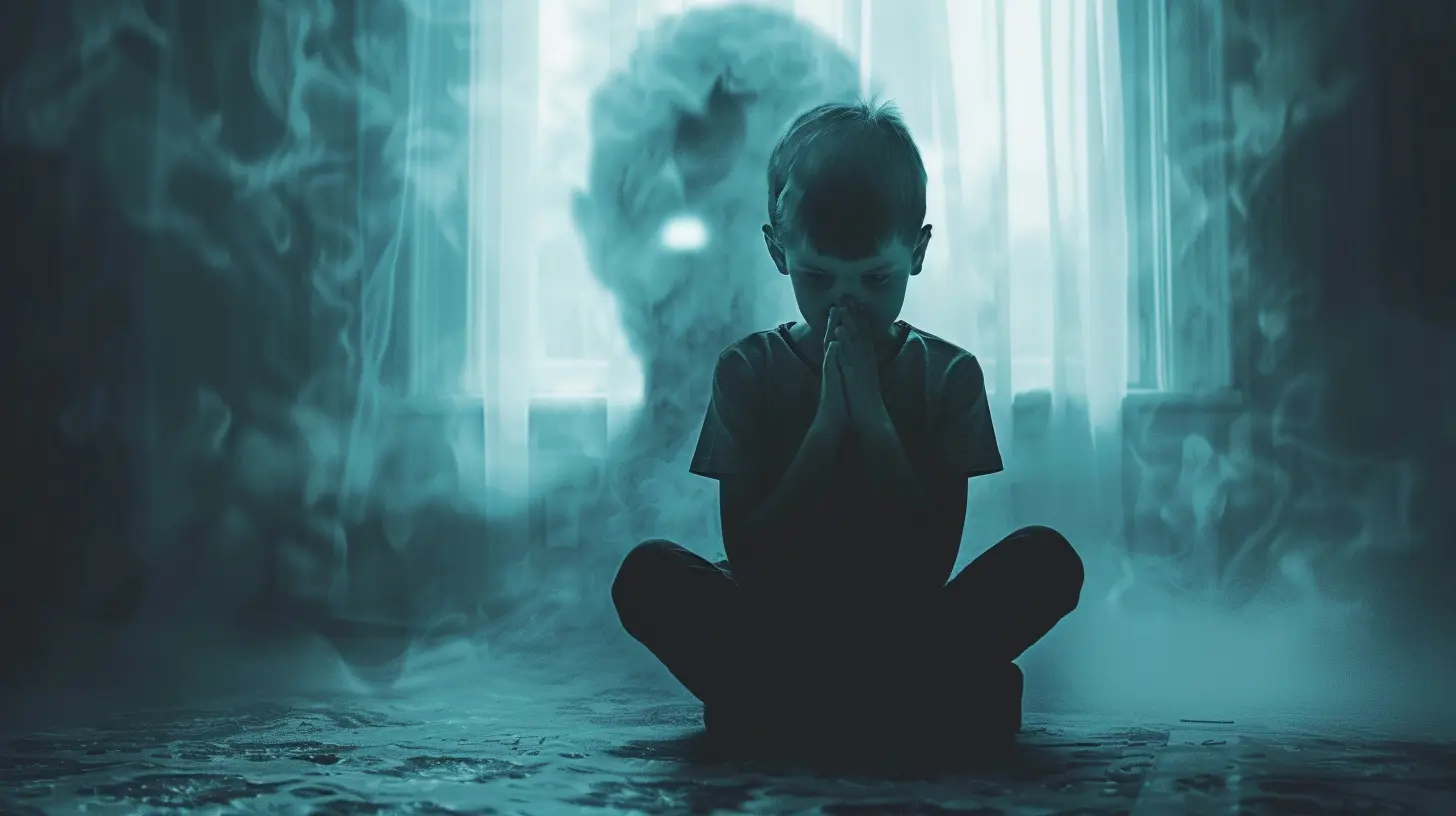How to Support a Child with Obsessive-Compulsive Disorder
11 June 2025
Raising a child is no walk in the park. But when your little one is battling something as complex and confusing as Obsessive-Compulsive Disorder (OCD), it can feel a lot like navigating a maze… blindfolded.
You might be watching your child repeat behaviors, ask the same questions over and over again, or spend hours stuck in routines. It’s frustrating, heartbreaking, and at times, downright exhausting. But here’s the thing—you’re not powerless. In fact, with the right tools and mindset, you can be the rock your child needs.
In this article, we're diving deep into what OCD is, how it affects young minds, and most importantly, how you can support your child through it all with compassion, patience, and a sprinkle of strategy.
What Is Obsessive-Compulsive Disorder (OCD)?
Before we get into the “how,” let’s talk about the “what.” Obsessive-Compulsive Disorder is a mental health condition that affects people of all ages, including children. It’s made up of two parts:- Obsessions – Intrusive, unwanted thoughts, images, or urges that cause distress or anxiety.
- Compulsions – Behaviors or mental acts a person feels driven to perform in response to the obsessions, often aimed at reducing anxiety or preventing something bad from happening.
Let’s say your child has an intense fear of germs (an obsession). The child may feel compelled to wash their hands forty times a day to “feel safe” again (a compulsion).
These behaviors aren’t habits or quirks—they’re often irrational, disruptive, and cause significant stress.
Recognizing OCD in Children
Kids can be tricky little creatures. They all have routines and get fixated on things now and then. So how can you tell the difference between regular childhood behaviors and OCD?Here are some red flags that might indicate something deeper is going on:
- Excessive handwashing, checking, or repeating
- Unusual rituals before bedtime or school
- Constant need for reassurance (asking the same questions repeatedly)
- Irrational fears that are hard to talk them out of
- Getting extremely upset if something isn’t “just right”
- Spending an abnormal amount of time on daily tasks
If your child shows several of these behaviors regularly—and if it’s interfering with school, play, or family life—OCD may be at play.
Step 1: Educate Yourself First
You wouldn’t try to fix a car engine without understanding how it works, right? The same goes for OCD.Arm yourself with knowledge about how OCD functions in kids. Read books, watch videos, ask professionals questions, and check out reputable websites. The better you understand OCD, the less scary it becomes—and the more equipped you’ll be to help your child fight it.
Here are some great starting points:
- The International OCD Foundation (IOCDF)
- The Anxiety and Depression Association of America (ADAA)
- Books like "What to Do When Your Brain Gets Stuck” by Dawn Huebner (geared toward kids)
Step 2: Don’t Reinforce the Compulsions
This one's tough. When your child is in distress, your natural instinct is to comfort them. Maybe that means answering the same reassurance-seeking question 12 times a day, or helping them redo things until it feels “right.”While it seems helpful in the moment, this accidentally reinforces the OCD behaviors. You're feeding the OCD monster, giving it more power.
Instead of giving in to the rituals or obsessions:
- Acknowledge their anxiety
- Validate their feelings without validating the obsession
- Use phrases like, “I know this is really hard right now, but we’re not going to let OCD be the boss.”
Step 3: Create a Safe and Supportive Environment
OCD thrives on fear and secrecy. So, your home needs to be a “safe base” where your child feels understood—not judged.Here’s how to do that:
- Be patient (even when it’s hard)
- Encourage open conversations about thoughts and feelings
- Avoid punishment for OCD behavior
- Praise their effort, not perfection
A simple shift in language can go a long way. Replace “Why do you keep doing that?” with “That must be really tough for you—do you want to talk about it?”
Step 4: Seek Professional Help Early
Let’s be clear: OCD is not a phase, and it won’t go away on its own. Early intervention is key.Look for a licensed mental health professional who specializes in pediatric OCD. The gold standard treatment? Exposure and Response Prevention (ERP)—a form of Cognitive Behavioral Therapy (CBT) that gently exposes the child to their fear and helps them resist the urge to perform the compulsion.
ERP sounds a bit scary but done correctly, it’s empowering. Your child learns that they can feel discomfort without giving in to OCD’s demands.
Sometimes, medication like SSRIs (selective serotonin reuptake inhibitors) is also prescribed, depending on the severity.
Step 5: Get Involved in The Treatment Process
Therapy isn’t just for your child—it’s for the whole family.You’ll likely be asked to participate in sessions, learn strategies, and reinforce progress at home. Think of yourself as a “coach,” not a spectator. Your involvement makes a huge difference.
Some helpful things you might learn in family-based therapy:
- How to identify OCD vs. typical behavior
- How to resist accommodating rituals
- How to manage your own anxiety around your child’s condition
A therapist can guide you so you're not just reacting to OCD — you're working with your child to beat it.
Step 6: Encourage Healthy Emotional Expression
Kids (and honestly, adults too) struggle to put their emotions into words. OCD can make this even harder.Try to build emotional awareness with your child. Instead of just asking, “Are you okay?” say things like:
- “You seem a little worried—what’s going on in your head?”
- “Where do you feel the worry in your body right now?”
- “What would you like to tell OCD if it had a face?”
You could even use art or storytelling to help them externalize and personify their OCD—like calling it “The Worry Monster” or “The Bossy Brain.” This helps them take some control back.
Step 7: Set Realistic Expectations
You’re not going to “fix” OCD overnight. It’s not like the flu where a dose of meds clears it up. Recovery is a journey with ups, downs, and unexpected turns.Celebrate small victories:
- Completing a task despite anxiety
- Resisting a compulsion once (even if they give in the next time)
- Opening up during therapy
Remember, two steps forward and one step back is still progress.
Step 8: Teach Coping Skills
The toolbox metaphor works well here. Just like a builder needs tools to construct a house, your child needs skills to handle their anxiety.Here are a few simple tools:
- Deep breathing techniques
- Grounding exercises (like 5-4-3-2-1: Name 5 things you see, 4 you can touch, etc.)
- Journaling
- Drawing or coloring feelings
These don’t replace professional therapy, but they help your child practice calming themselves in stressful moments.
Step 9: Take Care of Yourself, Too
Here’s an unpopular opinion: You can’t pour from an empty cup. Taking care of your mental and emotional health isn’t selfish—it’s essential.It’s okay to feel overwhelmed. Supporting a child with OCD can stir up a whirlwind of emotions: guilt, fear, even anger. Don’t ignore those feelings. Talk to a therapist, join a parent support group, or simply give yourself permission to rest.
Your well-being directly affects how you show up for your child. So be kind to yourself.
Step 10: Be Your Child’s Advocate
There will be times you’ll need to speak up—at school, among family members, or even with health professionals.Your child may need:
- A 504 Plan or IEP at school for accommodations
- Special considerations during testing
- Extra time for transitions
Educate teachers and caregivers about what OCD is and how it shows up. Be firm but respectful. You know your child best.
Final Thoughts: You’ve Got This
Supporting a child with OCD doesn’t come with a manual. There will be tough days. There will be wins. Your love, consistency, and effort matter more than you know.You’re not alone on this path. With the right approach and a whole lot of heart, you can help your child build resilience, confidence, and a life not ruled by OCD.
Keep showing up. Keep learning. And most importantly, keep believing in your child—even on the hard days.
Because at the end of the day, OCD might have a loud voice… but it doesn’t stand a chance against a loving, informed, and determined parent.
all images in this post were generated using AI tools
Category:
Psychological Disorders In ChildAuthor:

Eliana Burton
Discussion
rate this article
2 comments
Uriel McConnell
Empathy and patience are key in supporting children with OCD.
June 14, 2025 at 4:01 PM

Eliana Burton
Absolutely! Empathy and patience create a safe space for children with OCD, helping them feel understood and supported throughout their journey.
Darius McGinnis
Supporting a child with OCD? Think of it like being their superhero sidekick—ready, patient, and full of love! 🦸♂️❤️
June 11, 2025 at 3:09 AM

Eliana Burton
Absolutely! Being a supportive sidekick means understanding their struggles and providing unwavering love and patience.


